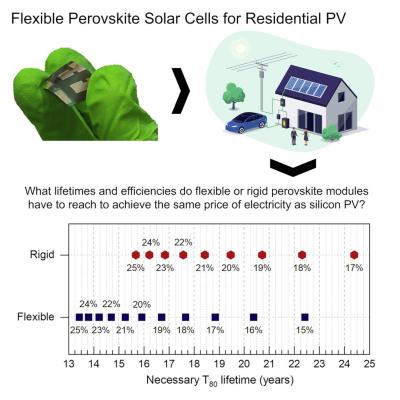Researchers at Switzerland's EPFL and Sungkyunkwan University in Korea have addressed the issue of perovskite solar cells' stability. They focused on the degradation of perovskite thin films, which can be damaged by exposure to moisture, heat, and light. The team looked at two specific crystal facets (the crystal's flat surface), characterized by a particular arrangement of atoms. The arrangement of atoms on these facets can affect the properties and behavior of the crystal, such as its stability and its response to external stimuli like moisture or heat.
The researchers looked at the (100) and (111) facets of perovskite crystals. The (100) facet is a plane that is perpendicular to a crystal's c-axis with its atoms arranged in a repeating pattern in the form of a square grid. In the (111) facet the atoms are arranged in a triangular grid. The study found that the (100) facet, which is most commonly found in perovskite thin films, is particularly prone to degradation as it can quickly transition to an unstable, inactive phase when exposed to moisture. In contrast, the (111) facet was found to much more stable and resistant to degradation.







